Capybaras are large, South American mammals that resemble giant guinea pigs. This resemblance isn’t accidental, as they are closely related to guinea pigs and cavies. These water-loving mammals are actually the largest rodents alive today. Read on to learn about the capybara.
Description of the Capybara
Capybaras are quite large, standing approximately two feet tall at the shoulder. They have tan to brown dense fur, small ears, and a block-shaped head. They have three toes on their rear feet, and four toes on their front feet.
Interesting Facts About the Capybara
These creatures have garnered lots of public interest lately through viral videos and photos. These giant rodents have more interesting tricks hidden up their sleeves!
- Superb Swimmers – These animals are considered semi-aquatic, and spend much of their time in the water. They have webbing between their toes, helping them swim more efficiently. They can also hold their breath underwater for up to five minutes at a time.
- Indefinite Incisors – Like all rodents, capybaras’ teeth grow indefinitely. Their long incisors, used to gnaw on plant matter, grow continuously their entire lives. This trait is very useful to them because chewing on plant matter can grind down teeth very quickly. Unfortunately, if these creatures don’t get enough opportunities to chew, their teeth can grow too long for their mouths. Overgrown teeth can keep them from being able to eat food, and they can starve.
- “Nature’s Ottoman” – These creatures have hilariously and adorably become famous for their frequent role as a resting place for other animals. They have been photographed with birds, rabbits, other capybaras, and even monkeys sitting atop their heads or backs!
- Marking Morillo – Like many other animal species, these creatures use scent marking to communicate with one another. They have a gland on top of their noses, called a “morillo,” as well as scent-producing anal glands. They use their morillo and anal glands interchangeably to scent mark.
Habitat of the Capybara
Capybaras prefer to inhabit very densely forested habitats that are in close proximity to water bodies. They will inhabit lakes, ponds, rivers, marshes, swamps, and everything watery in between. Escaped animals are known to survive easily in similar habitats outside of their natural range, including in Florida.
Distribution of the Capybara
Capybaras are native exclusively to South America. They can be found in every South American country except for Chile.
Diet of the Capybara
These rodents are strictly herbivores, which means they eat only plant material. They will feed on a wide variety of vegetation. Some common food items are seeds and berries, grasses, aquatic plants, and tree bark. They tend to be very selective, and will feed primarily on a specific plant species depending on the animal, and the location.
Autocoprophagia
Capybaras are autocaprophagous, which means that they eat their own poop! This behavior helps them fully digest the hard-to-break down cellulose molecules in their diet. It also gives their natural bacterial gut flora a boost, helping maintain their immune system.
Capybara and Human Interaction
Capybaras have a quite stable population, despite frequent hunting in South America. They are relatively common in most areas, and can actually be very friendly. In some areas, they are hunted for their meat and their fur. In other areas they are killed because they pose competition to livestock.
Domestication
Capybaras are semi-domesticated. They have been farmed for their meat and their skin in South America. Animals are selected for their meat production, coat quality, and general disposition. Selective breeding and human use dictate that this animal has been undergoing domestication, though the extent of that domestication is unknown.
Does the Capybara Make a Good Pet
In some states it is legal to own a capybara. They are difficult to care for, as they require access to plenty of land for foraging, and water to swim in. Because they are selective about their food, it can be difficult to get them the proper nutrition they require.
Capybara Care
Capybaras in human care must have plenty of space to roam, and others of their kind to keep them company. They must also have plenty of water to swim and soak in, and adequate nutrition to meet their needs. In human care they are commonly fed a low-starch, high fiber biscuit, and supplemented with vegetables, Bermuda hay, and free grazing access to grass.
Behavior of the Capybara
Capybaras mostly live in small family groups with one dominant male, females, some subordinate males, and young. Living in a group allows them extra vigilance against predators. They spend much of their time in the water, and will frequently submerge themselves to escape predators.
Reproduction of the Capybara
Female capybaras will choose which male she wants to mate with, typically the most dominant in her group. She will only mate in the water, and simply leaves the water or submerges herself if she doesn’t want to mate.
Their gestation period of 130-150 days, and give birth to an average of 4 young. Her pups will begin to eat grass within a week, but generally don’t wean fully until 16 weeks old. Other females will help care for the young, and the pups will remain with the family group.

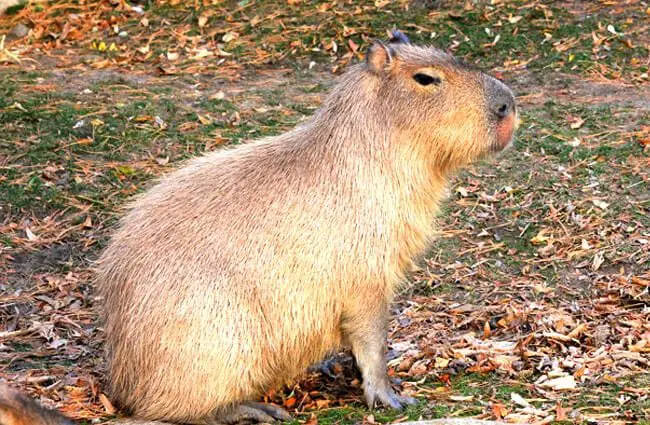

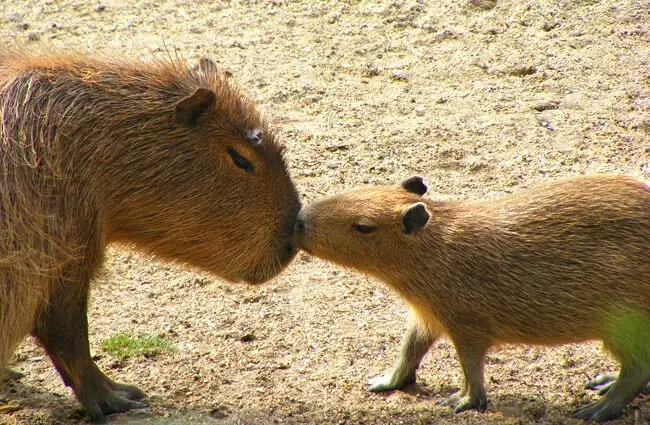
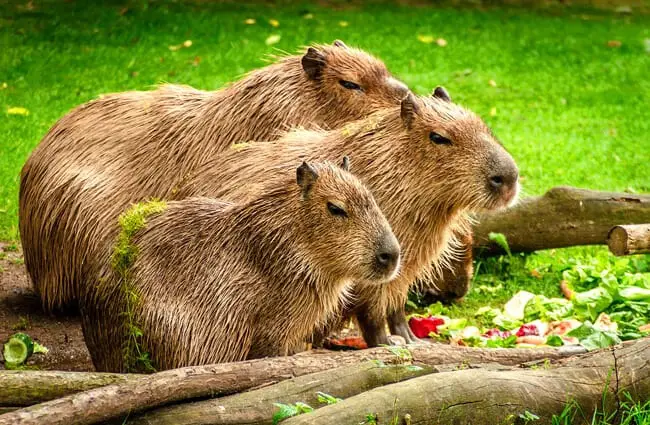
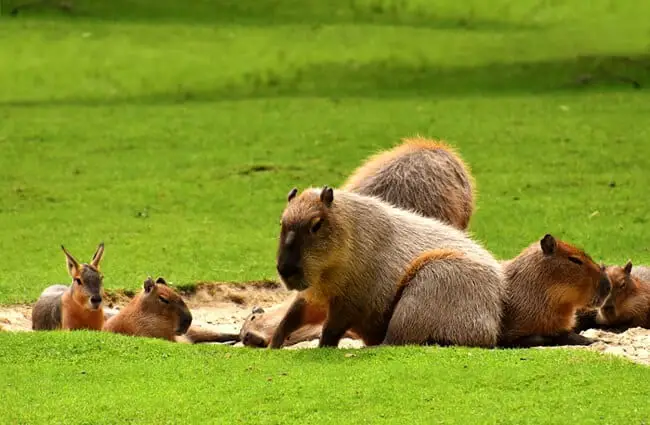
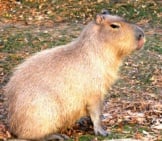
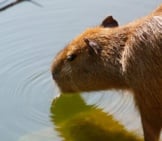
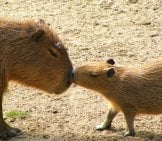
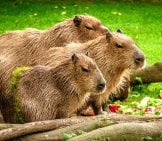
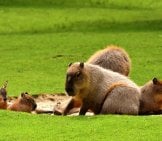
![Red Angus Closeup of a beautiful Red Angus cowPhoto by: U.S. Department of Agriculture [pubic domain]https://creativecommons.org/licenses/by/2.0/](https://animals.net/wp-content/uploads/2020/03/Red-Angus-4-238x178.jpg)












![Red Angus Closeup of a beautiful Red Angus cowPhoto by: U.S. Department of Agriculture [pubic domain]https://creativecommons.org/licenses/by/2.0/](https://animals.net/wp-content/uploads/2020/03/Red-Angus-4-100x75.jpg)

